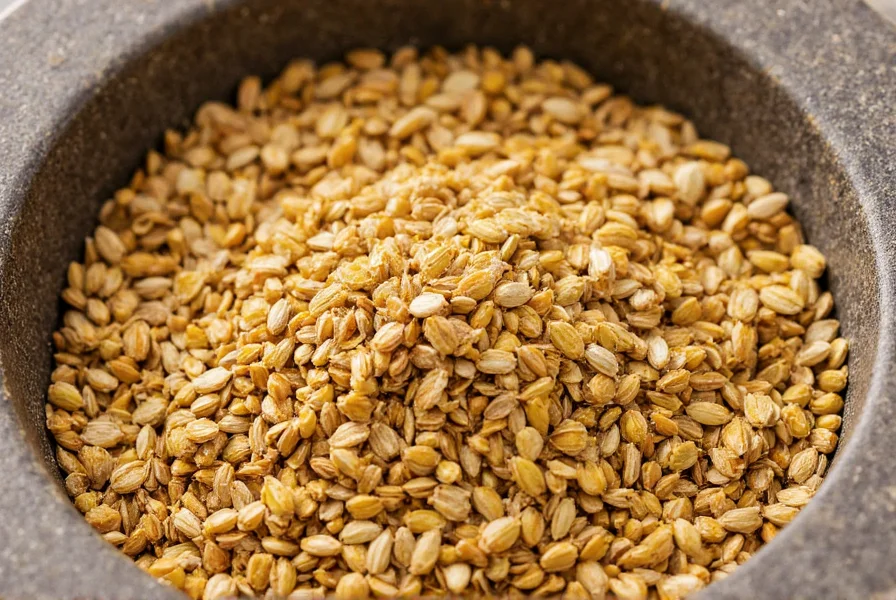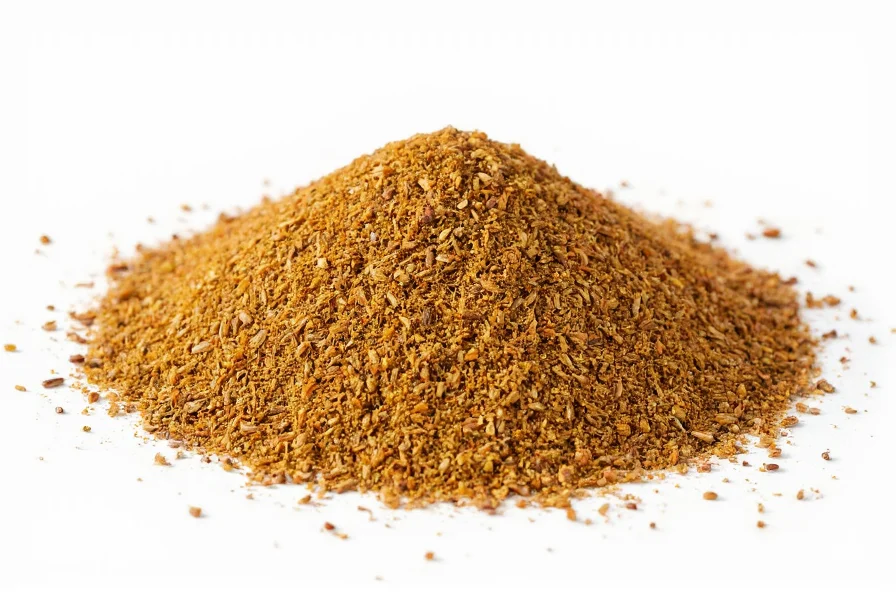Understanding this versatile spice begins with recognizing its botanical origin: Coriandrum sativum, the same plant that produces cilantro leaves. While whole coriander seeds maintain potency for up to a year, grinding exposes volatile oils, reducing shelf life but maximizing immediate flavor impact in dishes. Professional chefs prefer freshly ground coriander for critical applications, though pre-ground versions offer kitchen convenience.

What Exactly Is Ground Coriander Seed?
Ground coriander seed represents the pulverized form of mature coriander seeds, transformed from their natural round, beige appearance into a fine golden-brown powder. This processing method increases surface area, accelerating flavor release during cooking. The milling process doesn't alter the fundamental chemical composition but significantly impacts how quickly flavor compounds integrate into dishes.
Many home cooks confuse ground coriander with coriander powder, but they're identical—simply different regional naming conventions. Unlike cilantro (the plant's leafy component), ground coriander delivers earthy warmth without the polarizing soapy notes some detect in fresh cilantro.
Flavor Profile and Culinary Characteristics
Ground coriander seed offers a complex flavor profile that's simultaneously:
- Lemon-citrus top notes
- Subtle floral undertones
- Warm, nutty mid-palate
- Earthy finish with mild peppery hints
This multidimensional taste makes it indispensable in spice blends like garam masala, berbere, and za'atar. When comparing ground coriander seed vs coriander powder, remember they're the same product—just labeled differently based on regional preferences.
| Characteristic | Ground Coriander | Whole Coriander Seeds |
|---|---|---|
| Flavor Release | Immediate | Gradual (requires toasting) |
| Shelf Life | 3-6 months | 12+ months |
| Best Applications | Marinades, wet rubs, sauces | Slow-cooked dishes, pickling |
| Flavor Intensity | Moderate | More concentrated when toasted |
Essential Culinary Applications
Mastering how to use ground coriander in cooking transforms ordinary dishes into aromatic experiences. This spice shines in:
Global Cuisine Applications
- Indian cooking: Base for curry powders and dals (lentil stews)
- Middle Eastern dishes: Essential in falafel mixtures and kibbeh
- Mediterranean cuisine: Key component in toum (garlic sauce)
- Mexican recipes: Secret ingredient in mole sauces
When developing recipes with ground coriander, add it early in the cooking process for soups and stews to allow flavors to meld, but incorporate it later in dry rubs to preserve volatile oils. For best results in baking, combine with complementary spices like cinnamon and cardamom.
Optimal Storage Practices
Proper storage directly impacts ground coriander's flavor longevity. Follow these storage tips for ground coriander to maintain peak quality:
- Store in airtight glass container away from light
- Keep in cool, dark cupboard (not above stove)
- Never store near heat sources or in refrigerator (causes condensation)
- Mark container with purchase date
Ground coriander typically remains potent for 3-6 months. Test freshness by rubbing a small amount between fingers—if the citrus aroma is faint, it's time for replacement. For extended shelf life, purchase whole seeds and grind as needed using a dedicated spice grinder.

Effective Substitution Strategies
When facing ground coriander seed substitutes, consider these options based on recipe requirements:
- For whole seeds: Use 3/4 teaspoon ground coriander per 1 teaspoon whole seeds (toasted first)
- When unavailable: Combine equal parts cumin and caraway for earthy notes
- For citrus notes: Add pinch of lemon zest to curry blends
Remember that substitutions alter flavor balance—ground coriander's unique profile can't be perfectly replicated. In authentic Indian recipes, consider making a special trip to an ethnic market rather than substituting.
Signature Recipe Applications
These dishes showcase ground coriander's transformative power:
Golden Turmeric Chicken
Combine 2 tablespoons ground coriander with 1 tablespoon turmeric, 1 teaspoon ginger, and 3 cloves minced garlic. Marinate chicken for 4 hours before roasting. The ground coriander's citrus notes cut through the turmeric's earthiness.
Chickpea and Spinach Curry
Bloom 1.5 tablespoons ground coriander in coconut oil before adding tomatoes and chickpeas. Simmer 20 minutes—the spice's solubility in oil creates a more integrated flavor than adding later.
Frequently Asked Questions
Is ground coriander seed the same as coriander powder?
Yes, ground coriander seed and coriander powder are identical products. The different terms reflect regional naming preferences rather than any actual difference in the spice. Both refer to coriander seeds that have been milled into a fine powder.
Can I substitute ground coriander for whole seeds in recipes?
Yes, but with adjustments. Use 3/4 teaspoon ground coriander for every 1 teaspoon of whole seeds called for in a recipe. For best results in dishes requiring long cooking times, toast whole seeds first then grind them just before use to maximize flavor complexity.
Why does my ground coriander lose flavor quickly?
Ground coriander loses potency rapidly because milling exposes volatile aromatic compounds to air and light. Properly stored in an airtight container away from heat and light, it maintains good flavor for 3-6 months. For maximum freshness, purchase whole seeds and grind them as needed using a dedicated spice grinder.
What dishes showcase ground coriander best?
Ground coriander shines in Indian curries, Middle Eastern falafel, Mediterranean marinades, and Mexican mole sauces. It's particularly effective in liquid-based dishes like soups and stews where its solubility allows for even flavor distribution. For optimal results in dry rubs, combine with complementary spices like cumin and paprika.
How can I tell if my ground coriander has gone bad?
Fresh ground coriander should have a vibrant golden color and strong citrus aroma. If it appears dull brown, lacks fragrance when rubbed between fingers, or tastes flat and dusty, it's lost potency. Properly stored, it maintains quality for 3-6 months, but exposure to heat, light, or moisture accelerates degradation.











 浙公网安备
33010002000092号
浙公网安备
33010002000092号 浙B2-20120091-4
浙B2-20120091-4